The Google Nexus 7 Review
by Anand Lal Shimpi & Brian Klug on July 26, 2012 11:35 AM ESTThe Display
In this new age of high resolution panels with small dimensions, the goal seems to be to just get the display out of the way. You shouldn't notice the display, it should just quietly do its job and make you believe that what you're looking at is real. When viewed with this critical eye, very few displays do their job well.
The Nexus 7's display is somewhere between good and perfection. It's not on the latter end of the spectrum, but it's great for $199. Black levels are good, and max brightness is more than enough for indoor use, although you'll have problems outdoors if it's too sunny.
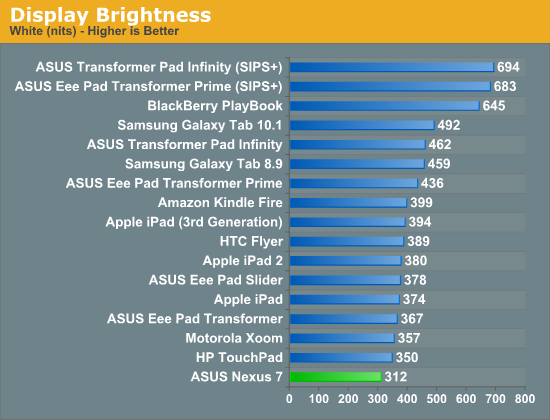
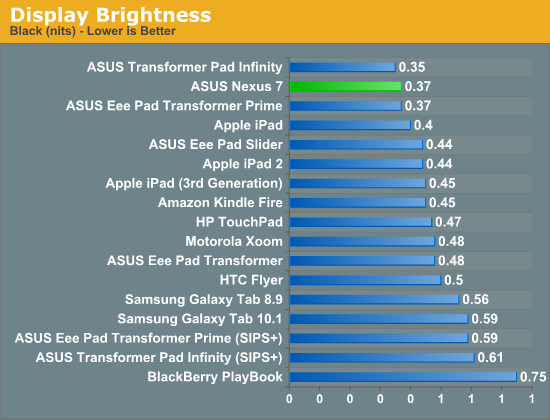

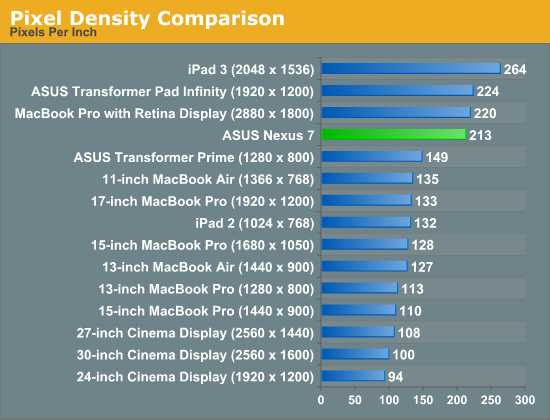
The resolution is high enough that neither Brian nor I were able to identify individual pixels at our normal viewing distances. Images do look better on the new iPad however (not a resolution but rather a panel advantage).
The other interesting aspect of the Nexus 7 is that it is a relatively new and somewhat interesting display form factor. 213 pixels per inch in a 7 inch display is unique for an Android tablet, and puts the Nexus 7 in the "tvdpi" screen density category for Android, 600 x 961 dp (that's dp - density independent pixels, relative to 160 ppi).
The end result is that some applications get a scaled down version of the 10" form factor Android 4.x UI, others don't. Some pages use the phone layout (for example the settings page, play store, and the notifications shade), others use the tablet two pane layout (for example Gmail) due to the 600dp width of the Nexus 7. That is to say it isn't totally correct to say that the UI on the Nexus 7 is a larger, scaled version of the phone UI, but something of an intermediary between the traditional 10" tablet version, and the phone version depending on what the break point is (in dps) for the particular app.
The other interesting note is that because 'tvdpi' isn't a primary display density for Android developers to build assets against, most often bitmaps get scaled down from the hdpi asset. In most places there isn't much of a noticeable softening of the edges, but I'll admit there are a few places where it's obvious bitmaps have been decimated and look a bit soft. Luckily, the pixel density of the display itself is high enough to mask most of this, but it isn't always perfect.
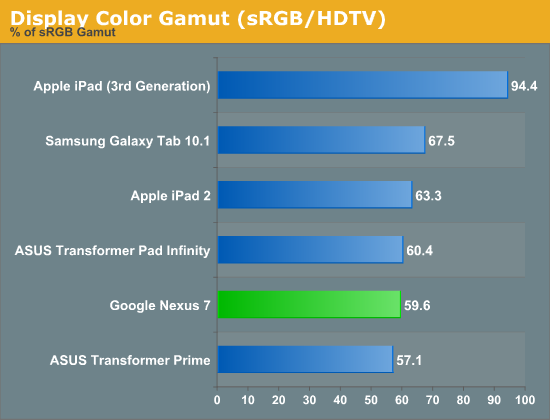
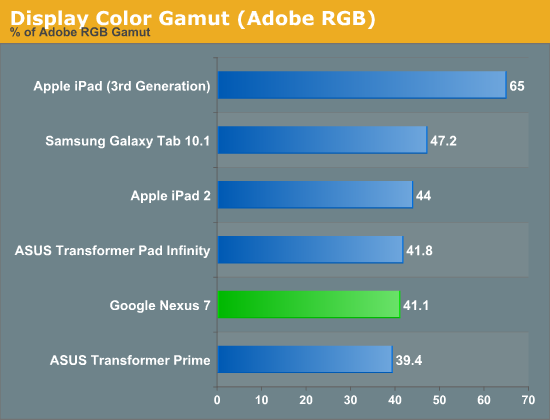
The Nexus 7's IPS panel offers great viewing angles, something that's simply a requirement for any device whose primary interface revolves around the display. Color accuracy is simply middle of the road, but I don't expect many users to do a lot of professional photo editing on the Nexus 7 so I'm not sure how much this actually matters.


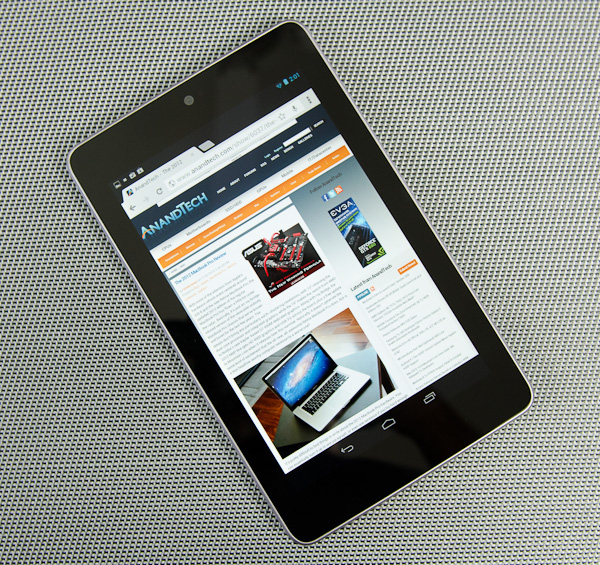








118 Comments
View All Comments
trajik78 - Thursday, July 26, 2012 - link
my buddy at work just got his Nex7. it's great, but the speaker is REALLY REALLY bad. distorts even at low volume.rfdparker - Friday, July 27, 2012 - link
I had the same issue. I tried a stereo audio test video from YouTube, and it seemed one of the pair of speakers had already blown on/before arrival, whilst the other was fine.So I'm getting it swapped today.
ImSpartacus - Saturday, July 28, 2012 - link
If Google had to skimp somewhere, I'm glad they skimped on the speakers.klmccaughey - Wednesday, August 8, 2012 - link
You still need *useable* speakers. If they are so bad you can't hear a thing then that rather detracts from the whole experience.lordsaytor - Friday, September 14, 2012 - link
Well said. It really is a shame. The Nexus 7 is such a fantastic tablet to use. If not for these minor flaws (the speaker, lack of hdmi, lack of expandable memory) this would be a perfect product. It would have taken the gold editor's award easily.But having said that, I can't complain about the $199 price tag and I suppose you get what you pay for.
But being the first ever tablet Google has made, I think things in the 7 inch market looks very promising. Other manufacturers (Apple, Amazon, Samsung) will have no choice but to make an even better tablet for the same price in order to take market share in the 7 inch category.
Johnmcl7 - Thursday, July 26, 2012 - link
I'm disappointed that micro SD slots seem to be disappearing from high profile Android devices and frustrating reviewers seem to skip over it. I can see why manufacturers want to take micro SD slots off devices but losing the slot is no benefit to consumers and being able to add lots of cheap memory to a device with an HD screen prime for video and games is useful.John
Wiggy McShades - Thursday, July 26, 2012 - link
I'd imagine google wants to try and sell people cloud storage rather than let them go and buy a micro sd card.mcnabney - Thursday, July 26, 2012 - link
Which makes no sense on a WiFi-only device.NoNeedForMonkeys - Saturday, August 4, 2012 - link
My N7 is wifi tethered to my phone when I am mobile.kmmatney - Thursday, July 26, 2012 - link
Seeing how quickly my son's 8GB iPod touch filled up, I think they could have really used more memory. Web browsing and streaming is OK, but you won't be able to install very many games, or put a full music library on it. It can't be that much more expensive to add another 16 GB.